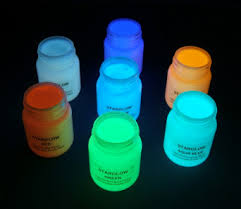Radium can get you through those times of need, but they are just a small part of what we do. Mysql workbench download for mac high sierra. We pride ourselves on giving businesses more than just financial resources. We help them use those resources as a springboard for building a solid financial foundation moving forward. Mar 12, 2021 Radium is a radioactive substance found in nature. Radium is produced by the radioactive decay of uranium. The intensity of radiation from radioactive materials decreases over time. The time required for the intensity to decrease by one-half is referred to as the half-life.
| Radium was discovered in 1898 by Madame Currie. |
Radium
| Atomic Number: | 88 | Atomic Radius: | 283 pm (Van der Waals) |
| Atomic Symbol: | Ra | Melting Point: | 700 °C |
| Atomic Weight: | 226 | Boiling Point: | 1737 °C |
| Electron Configuration: | [Rn]7s2 | Oxidation States: | 2 |
History
Radium was discovered in 1898 by Madame Curie in the pitchblende or uraninite of North Bohemia, where it occurs. There is about 1 g of radium in 7 tons of pitchblende. The element was isolated in 1911 by Mme. Curie and Debierne by the electrolysis of a solution of pure radium chloride employing a mercury cathode; on distillation in an atmosphere of hydrogen, this amalgam yielded the pure metal.
Sources
Originally, radium was obtained from the rich pitchblende ore found in Joachimsthal, Bohemia. The carnotite sands of Colorado furnish some radium, but richer ores are found in the Republic of Zaire and the Great Lake region of Canada. Radium is present in all uranium minerals, and could be extracted, if desired, from the extensive wastes of uranium processing. Large uranium deposits are located in Ontario, New Mexico, Utah, Australia, and elsewhere.
Radium Engineering
Properties

Radium Jaw
Radium is obtained commercially as bromide and chloride; it is doubtful if any appreciable stock of the isolated element now exists. The pure metal is brilliant white when freshly prepared, but blackens on exposure to air, probably due to formation of the nitride. It exhibits luminescence, as do its slats; it decomposes in water and is somewhat more volatile than barium. It is a member of the alkaline-earth group of metals. Radium imparts a carmine red color to a flame. Radium emits alpha, beta, and gamma rays and when mixed with beryllium produce neutrons. One gram of 226Ra undergoes 3.7 x 1010 disintegrations per second. The curie is defined as that amount of radioactivity which has the same disintegration rate as 1 g of 226Ra. Twenty five isotopes are now known; radium 226, the common isotope, has a half-life of 1600 years.
Radium Jaw
Uses
One gram of radium produces about 0.0001 ml (stp) of emanation, or radon gas, per day. This is purged from the radium and sealed in minute tubes, which are used in the treatment of cancer and other diseases. Radium was used in the producing of self-luminous paints, neutron sources, and in medicine for the treatment of disease. Other radioisotopes, such as 60Co, are now being used in place of radium. Some of these sources are much more powerful, and others are safer to use. Radium loses about 1% of its activity in 25 years, being transformed into elements of lower atomic weight. Lead is a final product of disintegration. Stored radium and radium-containing products or minerals should be ventilated to prevent build-up of radon.
Handling
Inhalation, injection, or body exposure to radium can cause cancer and other body disorders. The maximum permissible border in the total body for 226Ra is 7400 becquerel.
